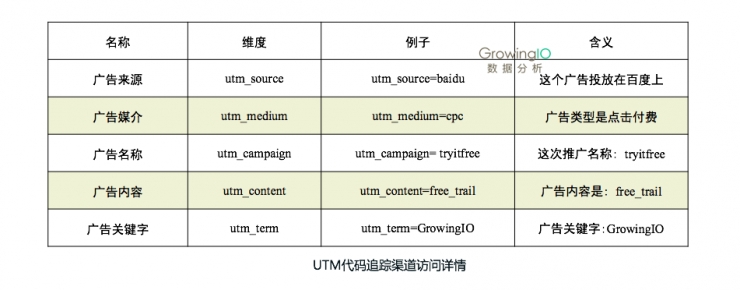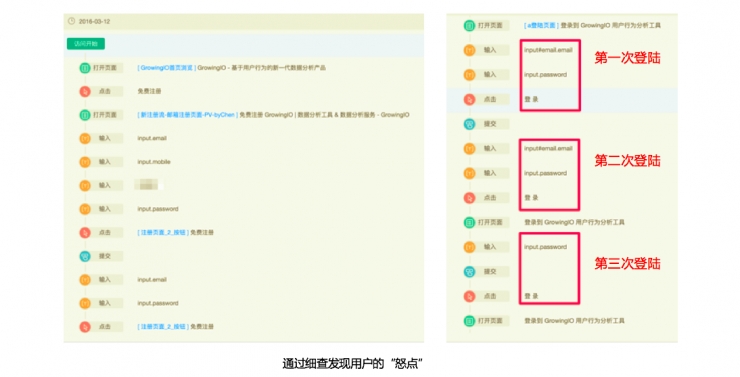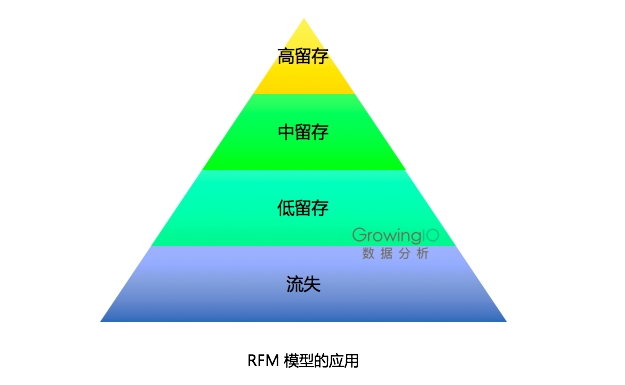Lei Feng: Press author: Zhang Ximeng, Founding & CEO of GrowingIO, and former senior director of LinkedIn Business Analytics.
| From the development trend of mobile Internet to talk about "data-driven growth"Why use data to drive growth? Let us first look at the development trend of the Chinese Internet.

The first point is that in the past 10 years, China’s Internet development has been very fast; especially mobile Internet, the ratio of new users on the mobile side in 2009 was as high as 35%. However, in recent years, the growth of new users on the mobile terminal has been slowing down to 6% at the end of last year. This shows that the demographic dividend is gradually subsided!
The second point is that in the past decade, the Chinese Internet was a typical "flow-based" economy. Everyone wanted to grab traffic, grab entrances, and grab winds. A survey shows that Chinese Internet users spend an average of 200 minutes a day using mobile phones, of which 71% are occupied by the top 20 websites or APPs, and the remaining 21% are divided by millions of websites or APPs.
In this context, many internet products have stagnated. If you think about it, if the demographic dividend and the flow dividend are all over, what should we do in the next era?
The next step will be an era of intensive cultivation. We need to pay more attention to product design, user experience, value output, and user's use of viscosity. This is one of the core concerns of using data to drive product growth and drive refined operations.
| Growth is king, how should the product growFirst of all, growth is king, and if it fails to grow, it begins to decline. The famous management master Peter Drucker said: "If you can't measure, you can't grow."
Second, product growth should have a complete set of methodologies. These things have been refined for more than a decade.
1, MVP concept.
When we have a good concept, we need to use the fastest time to turn it into a product. At the same time, we must use the data to measure the effect of new products in real time. If it is good, we will promote it. If it is bad, we will quickly fix it. Our products must be rapidly iterated and data must be used to guide us in refining operations.
2. Comprehensive, full-cycle business understanding.
Product managers should have a comprehensive thinking, not only consider their own interaction, design. A good product manager must understand the company's strategy, business, and be familiar with the needs of users. It needs to have product life cycle management thinking.
3. Have the spirit of "Growth Hacker".
Over the past decade or so, Silicon Valley in the United States has had a concept of increasing hackers, and has combed out a framework for refined operations: acquisition, activation, retention, cashing, and recommendation. In any of these five links, product managers can perform meticulous analysis and drive rapid growth.
From the perspective of a data analyst, a product manager must at least consider the following three factors in order to achieve product growth: driving forces, obstacles, and hooks.
First, product managers need to think about what our users are driven by, which is actually the customer.
Second, what obstacles and anger will users have in the process of using products; product managers need to find these problems through user behavior data, quickly correct, and continuously improve the user experience.
Third, what features of our products allow users to stay and keep users active on the platform. Next we set out from these three perspectives and explain how to use data to drive product growth.
| Understanding Drivers: Channel Optimization and Real-time MonitoringThe driving force is actually very simple! In the past, we spent money on traffic, such as competitive bidding, advertising alliances, price cuts, and so on. However, today's demographic dividend and flow dividends are gradually receding. The cost of spending money to buy traffic is increasing. We need to develop from outbound marketing to inbound marketing. For example, through SEO to optimize the content and architecture of the website, to obtain more search traffic; to attract users' attention and transformation through content marketing. These new operating methods have very low customer acquisition costs and are quick to acquire users.
Access channel tracking: UTM code

Previously, we used advertising, keywords, and articles to make more brain-brain decisions, and did not perform detailed analysis on different channels; now GrowingIO can use UTM codes to track the user's visit source, media, content, and keywords. In reality, it not only pays attention to the traffic of different channels, but also pays attention to the conversion rate of different channels. We need to know how many users are deeply converted to become our core users, and which users will generate revenue for us in the future.
Product iterations are more efficient: real-time monitoring
The concept of minimally viable product (MVP) emphasizes the product iteration of small steps. A new product goes from concept to molding, we need data to verify whether the new product or function meets the market demand. At the same time, the user behavior data is also the user's native feedback on the product experience, which can help the product discover problems and correct them quickly.

For example, the company has quickly launched an activity page in conjunction with market hot spots. Products and operations need to monitor and evaluate the effectiveness of this activity. After the product activity page went online, the overall page traffic increased sharply, and the activity page rose to the second position on the active page. Such real-time data can quickly verify the effectiveness of the product, help product managers to quickly assess, iterate, and drive product growth.
The core of data analysis is to divide a product or a business into different layers. Each layer is measured with accurate data.

For example, the general product manager or design is more concerned with elements such as visual, interactive design and information framework. Going further, we need to think more about the content of our products and the needs, experiences, etc. of our users.
Let the product at a glance: heat map

We use the heat map of a blog page as an example. On the left is a heat map of H5, and on the right is a heat map of the Web. We analyze this product from different levels. First, we analyze the framework of information interaction to see where the user's attention area is. The second point is to analyze how the conversion rate of each location is. Thirdly, taking the blog's “The First Data Analysis Manual for Internet Growth†as an example. Although this article is in the second place, the user’s traffic is very high and the activity is very high. This shows that its content has a Direct attraction.
When we do data analysis and product production, we can use heat maps to do a specific segmentation of the product's UI, UX, content, and users, thus enabling a multi-level analysis of the product. When you know the specifics of each level of each product (such as conversion rate), you can further optimize the product : this is the basic idea of ​​product iteration .
Increase conversion rate: funnel drill
Broadly speaking, all commercial websites or APPs are e-commerce, and all need to be realized by users. E-commerce is most concerned with conversions, such as registration conversions, purchase conversions, and search conversions; each step of conversion is very subtle, and they ultimately determine the GMV or turnover of our site. In 2007, I worked on eBay. There were 17 conversion formulas; registered users to search conversion rate, search to browse product conversion rate, browsing product to purchase conversion rate, etc., and they were successively divided into 17 steps. These 17 steps constitute the company's operating system. Once the conversion rate of each step is reduced by 0.1%, someone will immediately check the reason.

We take the user's registration conversion as an example to show you how to find problems and solve problems. Every company today has a registration process and users are required to fill in email addresses, cell phone numbers or company information. To improve conversion rates, the premise is that you should be able to measure each step of conversion. We have established a funnel for the registration process, and we can clearly see the conversion rate of the overall and each step. At the same time, we can also split the index of conversion from different dimensions. The split dimensions vary according to business needs.

Take the registration conversion of GrowingIO as an example. In January of this year, our overall registration conversion rate was 7.6%. We split the conversion rate from the browser's point of view and found that the IE browser's user conversion rate was 1.4%, while the Chrome browser's conversion rate was as high as 12.2%. Why is the conversion rate of Internet Explorer users so low? Is it that our website is not adapted under IE? Of course, this is just a guess and there is no sufficient evidence to prove it. We found out all the failed users of IE registration, built a group, and observed the behavior of 3-5 of them. We could probably find the problem.
 Through the detailed investigation of GrowingIO, the product manager found that the user who failed to register with IE had a problem in the submitting section. The user repeatedly entered the account password and could not submit the success. After verification, this is a BUG, ​​which is the user's "furious point" because our new java architecture is incompatible with IE. At that time, our engineers spent 2 hours doing compatible products, and the registration conversion rate of IE users increased to 12% in the next month.
Through the detailed investigation of GrowingIO, the product manager found that the user who failed to register with IE had a problem in the submitting section. The user repeatedly entered the account password and could not submit the success. After verification, this is a BUG, ​​which is the user's "furious point" because our new java architecture is incompatible with IE. At that time, our engineers spent 2 hours doing compatible products, and the registration conversion rate of IE users increased to 12% in the next month.
Everyone thinks about whether there are many such missing points in our products today, leading to the continuous loss of users; only one of them can make up for such leakage, the conversion rate of our products and users will only increase, and the products will continue to grow. .
| How products can hook users: retentionRetention, as the name implies, refers to visiting your website and returning for a while. I communicate with people with many products and operations, and I really understand that there are very few people who keep them. Facebook discovered a 521 principle. If an internet product has a retention rate of less than 50% every other day, if the remaining rate is less than 20% every other week, and if the remaining rate is less than 10% every month, this product will be very difficult to be successful.

This retention curve is difficult to change if you do not do any work, and users will slowly lose. From the perspective of product features, we have found that users who have used the A function (red retention curve in the above figure) are more active and have higher retention. From the perspective of product iteration, we put the entrance of the A function on the first page in the next version plan to make it more traffic; stimulate more users to use the A function at high frequencies, thereby increasing the overall retention.

The difference in retention of different users is very large. Generally, we divide users into four categories: high retention, medium retention, low retention, and loss of users .
High retention people generally contribute 35% to 60% of their revenue. Although they are very small, they have very high viscosity. The moderately retained users are generally our core user group, which accounts for 20%-25% of our company's active users; the rest are low active users and lost users. It is not difficult to see the value of these users and the proportion of users is completely upside down.
Product managers should carefully study the behavior of high retention users, see what product features they use, and how they are used; what functions are used by low retention users and how they are used. In this comparison, you will find many core functional points of the product. After finding these core functional points, all our products, operations, and businesses will be changed in this direction.
To give a few simple examples, LinkedIn found that users added 5 social friends in the first week, Facebook found that users added 10 friends in the first week, Twitter found that users had 30 fans in the first week, and Dropbox found users on both operating systems. If used, the retention of these users will be very high. Each product has its own magic number. If the product manager can find these magic numbers, it can be targeted to promote product growth.
| Three levels and five stages of data analysisThe growth of data-driven products is reflected in three levels, namely, the "Tao", "Skill", and "Tools" of Chinese people.
“Tao†refers to the value concept. A good product manager should be able to identify the value of the data; if you do not recognize this value, you cannot push it anyway. “Surgery†means that product managers must have the right methodology, such as the emerging “Growth Hacker†framework, which drives product growth from acquisition, activation, retention, cash out, and recommendation. "Tools" refers to good tools. A good data analysis tool can help product managers speed up product iteration and shorten the development cycle, thereby increasing the value of users.
With data to drive product growth, product managers need to understand the five phases of data analysis. In general, the commercial value of data analysis increases with the complexity of the analysis.

In the beginning, people made decisions based on brains, thighs, and chest shots, all relying on intuition. At the time, when your system became more and more complex, making brain decisions made a lot of mistakes, and the efficiency was getting lower and lower.
In the first phase of data analysis, we need to know history and what happened before. This is the basis.
In the second stage, you need to find out why people use your product and why they pay for your product. Why do different users have such a big difference in viscosity?
In the third stage, product iteration and operation are faster. In the past, people updated a version in three months, and now many product managers make a decision every day through data, run quickly and quickly, and iterate quickly. In this process, special emphasis needs to be placed on real-time analysis, and new features are on-line and product operations need real-time monitoring.
The fourth stage, through the data to predict. People's behavior is difficult to change, and the user's previous behavior is likely to continue.
Finally, the core of dataization needs to be well implemented and needs to be landed. We need to make changes in the future. We can realize the growth of products, businesses and users through market management, content dissemination, business promotion and so on, creating a steady stream of value.
Lei Feng network (search "Lei Feng network" public concern) Note: This article starting GrowingIO official blog, WeChat public number GrowingIO, the author of the publication posted Lei Feng network, reproduced please contact the authoritative, and retain the source and the author, not to delete the content.
Propane Regulator,Co2 Regulator,Oxygen Regulator,Propane Gas Regulator
Changshu Herun Import & Export Co.,Ltd , https://www.herunchina.com
